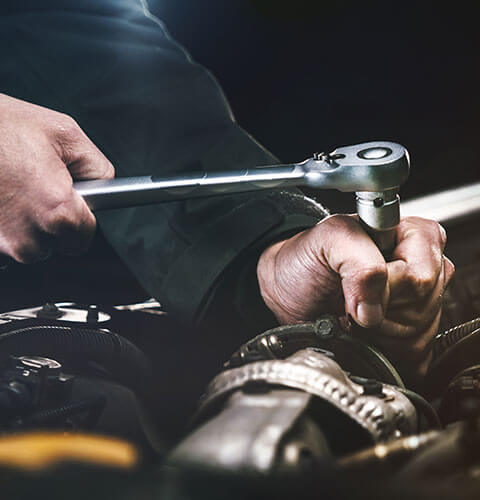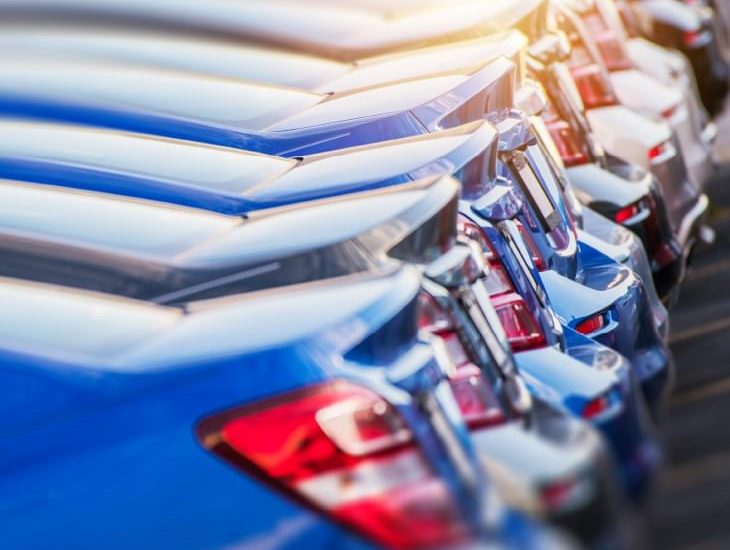Everything you need to know about trade plates
If you work in the motor industry, trade plates can save you time and money. But why do you need them?
This guide tells you everything you need to know about trade licence plates:
- What are motor trade plates?
- Who needs trade licence plates, and why?
- When do you use them?
- How much do traders’ plates cost?
- How do you get them?
- What are the rules for using them?
We also explain what trade plates mean for your motor trade insurance policy.
What are motor trade plates?
Motor trade plates show that a vehicle is being used temporarily for trade purposes. They are suitable for any vehicle that is temporarily in your possession; allowing you to drive without registering and taxing it first.
They should be displayed anywhere at the front or rear of a vehicle (on the exterior), and must not cover the original number plates.
Who needs trade licence plates, and why?
If you work in the motor trade industry, you can benefit from using trade plates. The DVLA classify motor traders as:
- Dealers, manufacturers and repairers of vehicles (including those involved in collection and delivery)
- Manufacturers of trailers
- Valets and accessory fitters
- Vehicle testers (you’re eligible if you test other people’s vehicles on public roads)
Trade plates save motor traders time, hassle, and expense. For instance, instead of having to complete paperwork when registering vehicles and taxing each one, simply place your trade plates onto the vehicle you’re temporarily using. From there, you’re good to go!
When to use trade plates
Trade plates are handy for a range of circumstances. Some examples include:
- Road testing a vehicle following manufacture, repairs or servicing
- Driving a vehicle that you have purchased back to a garage or place of work
- Allowing potential customers to test drive a vehicle
- Moving the vehicle to an MOT station or public weighbridge
Please be aware that the vehicle featuring trade plates must be roadworthy before taking it on a public highway.
How much do traders plates cost?
Head to gov.uk to find the latest rates for trade licence plates.
The minimum trade licence you can apply for is six months. Licences expire on 30th June or 31st December each year.
If you’re applying for your first licence, it will typically last 7-11 months. This, however, can differ depending on the time of year the licence is issued. For example, if you bought a trade licence in April, it would expire on 31st December (as 30th June is only 2-3 months later), lasting up to 9 months.
If you’re renewing a licence, you can only choose the 6- or 12-month option. As of September 2020, the fees are £90.75 for a 6-month licence and £165.00 for a 12-month licence respectively.
You could also apply for a motorcycle and tricycle-only licence, where rates are lower. However, please be aware that you can’t use these plates on cars, vans or other vehicles.
How to apply for trade plates
You can only apply for trade licence plates from the DVLA. There are two forms to use to apply for trade licences:
Whichever form you complete, you will also need to send a copy of your motor trade insurance certificate. So, make sure you speak to us first before sending off your application!
What are the rules around using trade plates?
As described above, trade plates are strictly for motor trade business use only. You can only use them on one vehicle at a time, and you can’t keep a vehicle on the road if it is not in use (unless it has broken down, for example).
The fine for misusing trade plates is up to £5,000, and a possible jail term. That is why the DVLA vet all applications carefully and make sure you have motor trade insurance in place before they issue a trade licence.
Should you lose your licence or plates, you can use form VTL310 to apply for duplicates. And if you no longer require trade plates, you can use form VTL308 to surrender your trade licence and arrange a refund of duty paid.
Trade plates and motor trade insurance
You can often cover trade plates as part of your motor trade policy.
Remember to register your trade plates on the motor insurance database (MID). Whenever you drive a vehicle with temporary plates attached, you avoid the risk of being stopped by police for uninsured driving. That means saving the pain of having the vehicle impounded and/or receiving a fine.
When applying for trade plates, the name on the application should match the name on your motor trade insurance certificate.
Speak to us if you need further advice on 01625 854458.




